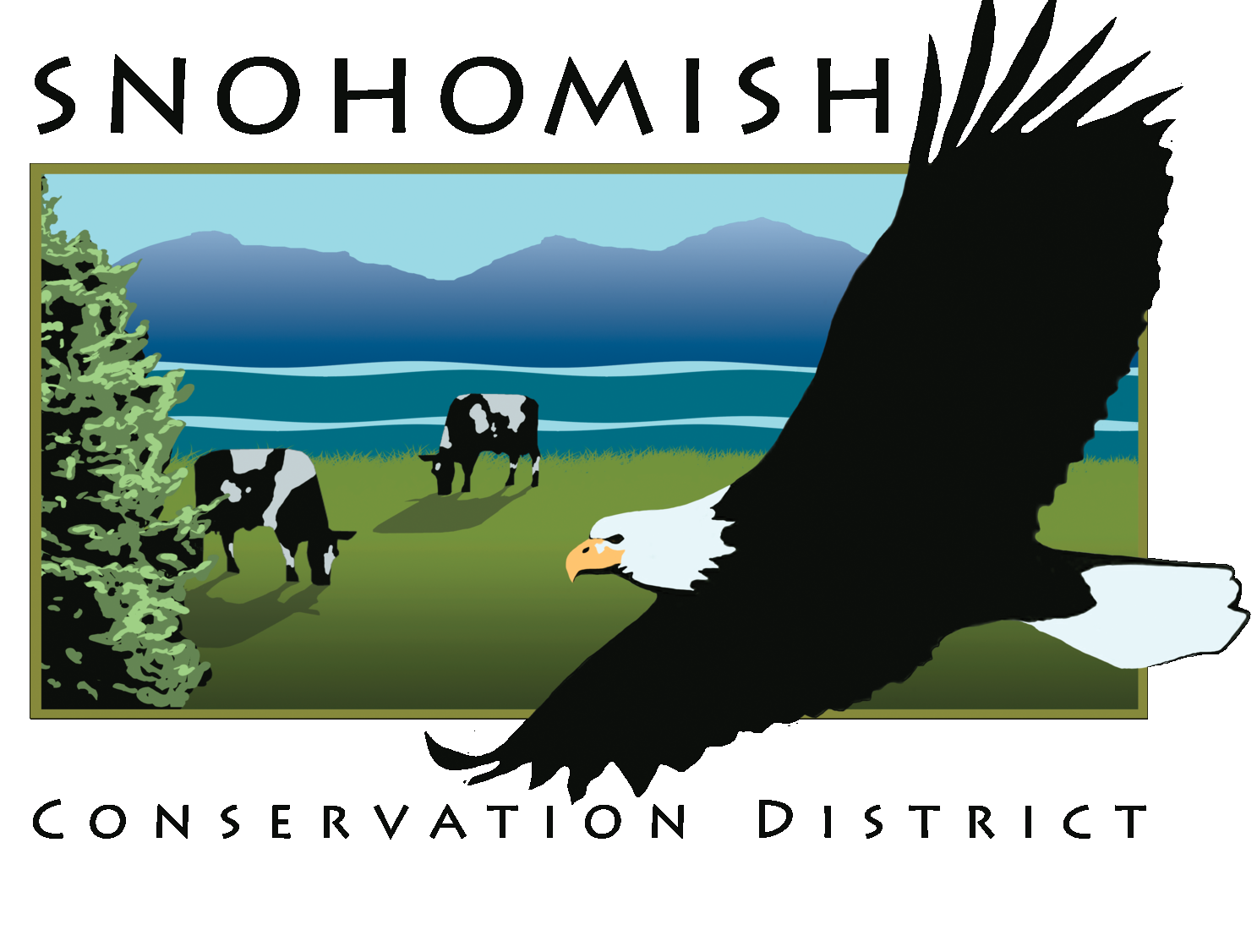Spreading the Good Stuff at Andrew’s Hay
/Andrew’s Hay and farm store covers 1,500 acres in the Stillaguamish Valley.
If you drive eastbound along Hwy 530 to Arlington, you’ll pass Andrew’s Hay and Farm Store, owned and operated by Andrew Albert. Andrew grew up in the area and spent his high school summers practicing farming.
“I started farming on my last day of high school freshman year,” said Andrew.
He began by baling hay on the school farm with some instruction from Steve VanValkenburg, his high school agricultural teacher—and current Snohomish Conservation District board member. That summer, Andrew and his friend Hans Hjort bucked 2,500 bales, giving Andrew a taste of his future.
SCD staff Jenna DeWitte and Natalie Nelson stand with Andrew Albert at his farm.
After sophomore year, Andrew rented 12 acres and his father’s old equipment to start his own hay operation. As Andrew was preparing to graduate high school, his uncle expressed interest in retiring and presented him with the opportunity to start taking over the business. Andrew eagerly took the chance and officially started farming full-time in 2003.
Today, Andrew’s farm covers 1,500 acres in the Stillaguamish Valley. While most of the operation hearkens back to his roots and consists of growing hay, there’s more to his farm these days. Andrew also offers local products at his farm store, bales certified weed-free straw, and grows wheat, spinach, swiss chard, cabbage for seed, and grass silage. Not to mention the pumpkin patch, corn maze, and educational field trips that bring families and children to the property to learn about local agriculture.
All of this is done with one of Andrew’s main goals in mind: “to promote and preserve agriculture in Arlington.”
Another goal of Andrew’s is to protect Portage Creek, which runs through his fields, and the Stillaguamish River, which flows nearby. In addition to partnering with the District to write a farm plan for Andrew’s Hay, Andrew recently worked with us to secure a grant to help cover the cost of manure guns to fertilize his fields. Prior to that, Andrew was having manure applied via a custom applicator twice a year. With the manure guns, he’s now able to choose when he applies manure throughout the growing season.
This is important because it allows Andrew to be more precise in the amount and timing of his manure applications. Farmers like Andrew calculate the amount of nutrients their crops need and when the plants can best use it. This helps avoid applying more manure than the plants can actually use, which reduces the chance that excess manure will run off the field and into nearby waterways. Preventing manure runoff keeps fecal coliform bacteria and nutrients from polluting our water.
Andrew’s manure applications are informed by soil testing, something he does annually in the spring or summer. Soil tests help Andrew and his team know how much manure to apply to crops after seeding. Now that they’ve been testing for multiple years, Andrew is seeing the benefits of previous manure applications through increased organic matter and improved nutrient levels.
“Healthier ground grows better crops,” said Andrew.
Since his beginnings in farming, Andrew has continually been looking for opportunities for improvement, and has always been particularly interested in the equipment that comes with the job—tractors, balers, tillers, etc. Now that he has the manure guns, he’s looking to invest in a flow meter and a splash plate. These two pieces of equipment will increase precision in manure application rates, something that will allow Andrew to go even further when it comes to protecting water quality, benefitting his crops, and his bottom line—a true win-win-win.
This project (WQC-2022-SnohCD-00101 Nutrient Runoff Reduction From Agricultural Lands in Snohomish County) was made possible with a Washington Department of Ecology Centennial Clean Water Fund grant.




